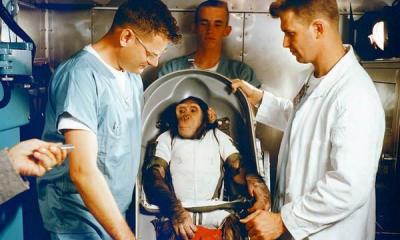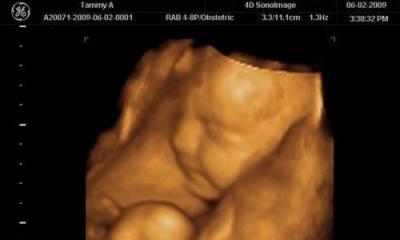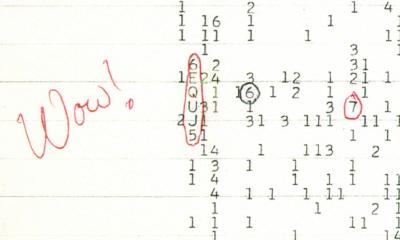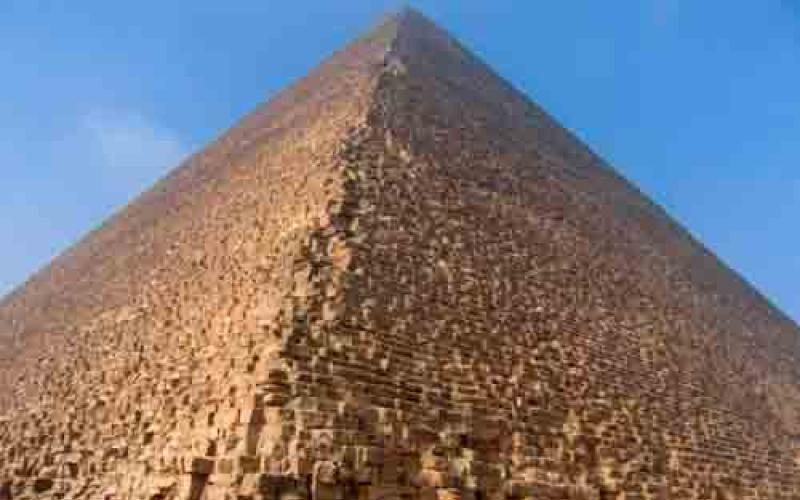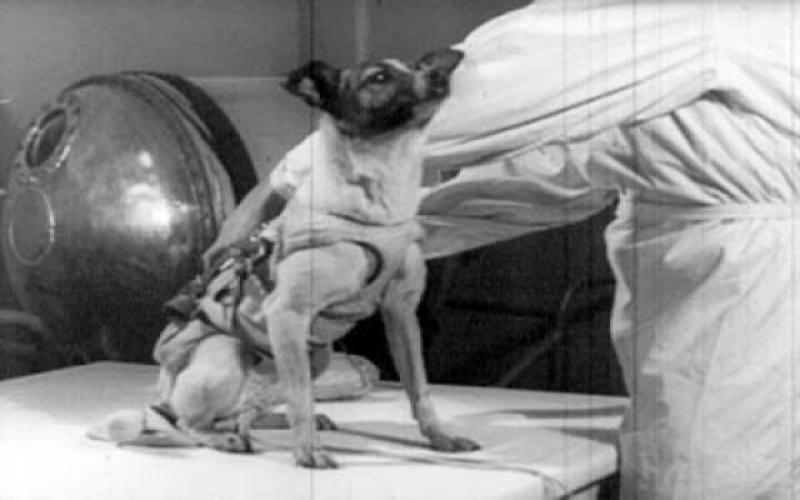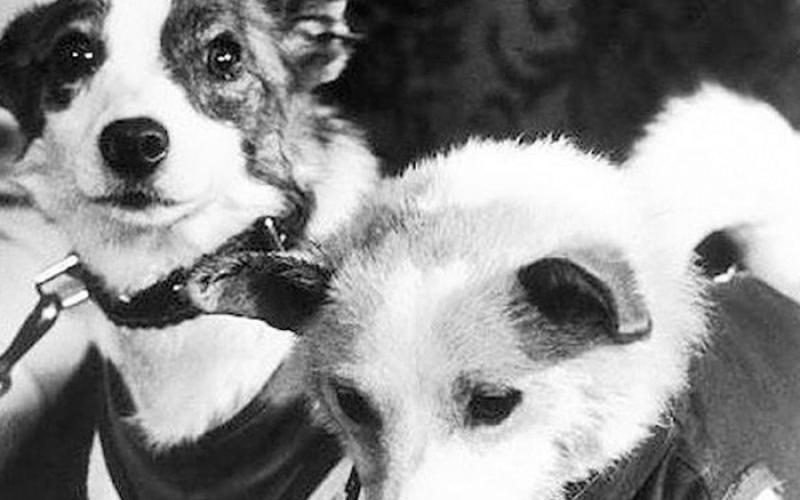San Francisco, USA. Our days. © Photo by humansofsiliconvalley.com
One of the most egregious injustices in history is that this dog still does not have the title of Hero of the Soviet Union. Or at least the Russian Federation (posthumously).
And this error has not been corrected until today. But today, November 3, marks the 60th anniversary of the flight of the first living creature into space. On this day in 1957, the first cosmonaut in history, the mongrel Laika, made four orbits around the Earth on the Sputnik-2 spacecraft and died.
Laika is the first living creature in space, in fact, the first astronaut. Her tragic fate, the subsequent fame and memory of the dog, which proved that living beings are capable of making space flights - all this draws on the title of a real Hero. Moreover, in her face, the muzzle will be awarded to all animals that have paved the way into space for science.
This collection contains 23 facts about Laika, who has done a lot not only for science and domestic cosmonautics, but also for what is now called "promoting the image of the country abroad."
1. When the question arose of who to send into space, scientists chose between dogs and monkeys.
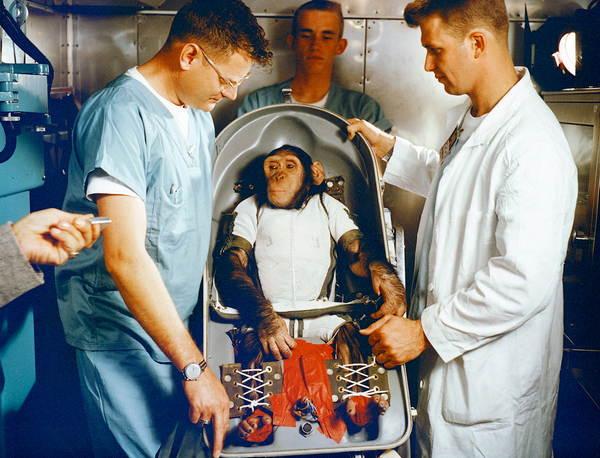
Photo by NASA
The dogs were chosen because they are more unpretentious and more amenable to training. There was also a political reason - the Americans used primates, and Soviet scientists did not want repetition. Pictured is the chimpanzee Ham, who flew into space on January 31, 1961 from the United States and returned home.
2. Laika is not the first animal to travel into space.
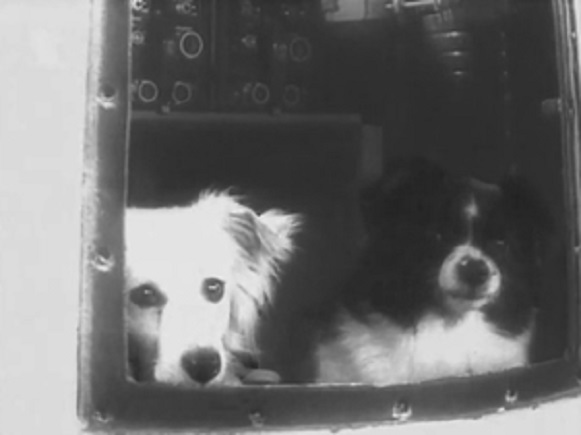
Dezik and Gypsy are the first dogs to fly a geophysical rocket into the upper atmosphere on July 22, 1951. Photo Wikipedia.
Even before Sputnik-2, there were launches of geophysical rockets with various dogs. There is a memorable date - July 22, 1951. The first flight of a "dog crew" on a vertical-launched geophysical rocket. But these devices, reaching several hundred kilometers, "snapped" containers with animals. And they parachuted down to earth.
With Laika it was different. She had to go into orbit and within a week (the life support system was enough) to make orbits around the planet.
3. Casting
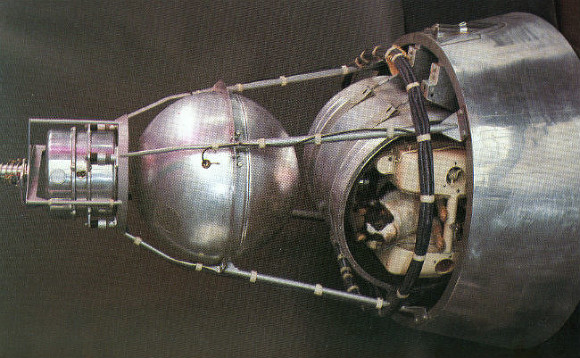
The photo shows the Sputnik-2 spacecraft with a biocosmonaut on board. Photo Wikipedia.
For an orbital flight, they wanted to select a mongrel dog, weighing no more than 7 kilograms. Thoroughbred dogs were excluded due to effeminacy and weakness. Photographers and television people demanded that the dog be white - this is how the animal looked better in the photo and film frames. A dozen animals reached the semi-finals of the casting. Three made it to the final - Mukha, Albina and Laika.
For various reasons, they chose the latter, she was then about two years old.
4. Before the flight, Laika underwent surgery, during which they installed breathing sensors on the ribs and a pulse sensor near the carotid artery.

Photo Wikipedia.
And more about the torment of animals ... The commission from the Central Committee and the Council of Ministers did not believe that Laika died due to a design error, and ordered experiments with similar conditions on Earth, as a result of which 2 more dogs died.
5. Laika had no chance to return alive.
At that time, there was still no system that would return vehicles from space to earth without significant damage. But even in flight, due to an error in the calculations, the dog lived only four orbits around the Earth. Due to the tight deadlines (it was imperative to be in time for the 40th anniversary of the revolution), a lot was done "at random". In flight, the cabin quickly began to heat up, the temperature reached 40 degrees and the dog died.
6. The authorities are hiding…
Laika during training in the Sputnik-2 apparatus.
According to Soviet tradition, they were not going to tell the truth, and all seven planned days were told about Laika's life in space. And then, upon completion of all the planned work, she was allegedly “put to sleep”.
Two months in space Laika is worn.
Whether alive, dead, try to find out.
The breath has not been written by the apparatus for a long time,
But everyone froze in anticipation of awards!
These poems were written by Colonel Vitaly Georgievich Volovich, later the head of the group of meetings and rescue of astronauts.
7. In the USSR, at first, they did not pay any attention to the first flight of a living creature into space.
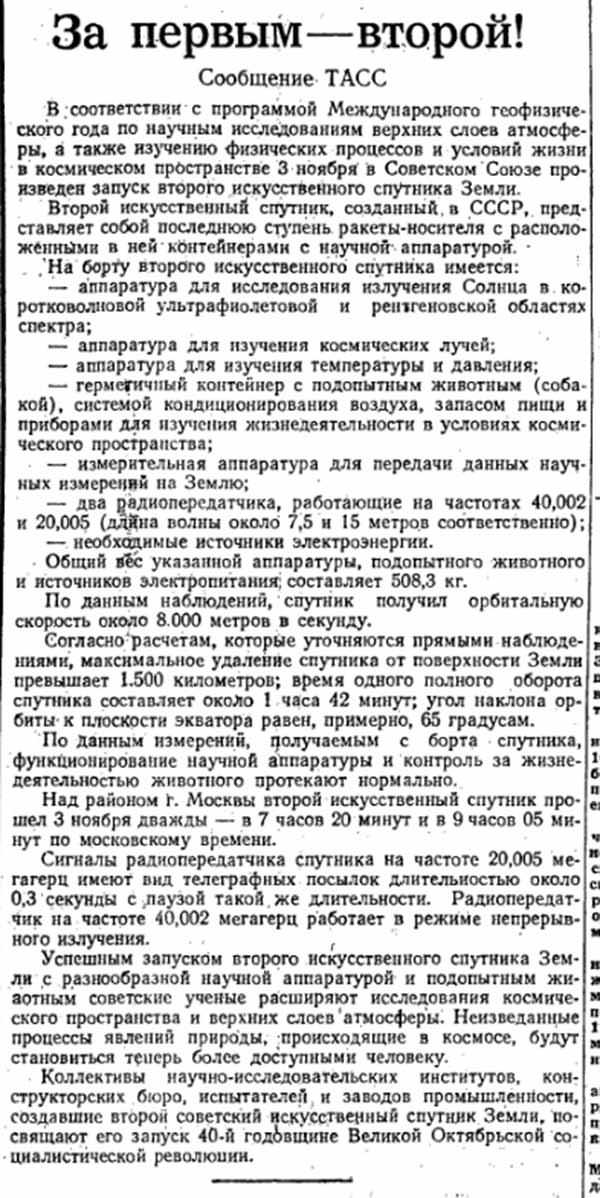
Surprisingly, the USSR propaganda machine did not place any emphasis on Laika's flight into space. TASS officially announced the launch of Sputnik 2 on the same day, but there is no emphasis on the flight of the dog in the agency's information. The scientific research equipment is simply listed, where the animal is mentioned separated by commas.
8. In the West, the Sputnik-2 flight with Laika became a sensation. The press expressed admiration for the dog and at the same time worried about it.
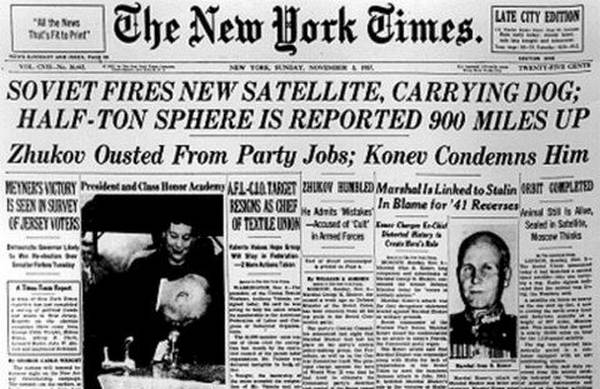
As already mentioned, the authorities concealed that the dog literally burned alive for several hours. But even the very fact of launching an animal into space without the possibility of returning has upset many people around the world.
Animal welfare organizations said that flying is a real barbarism. The New York Times published an article calling Laika "the loneliest and most miserable dog in the world."
9. In the West, they even offered to send the then head of the USSR Nikita Khrushchev into space.
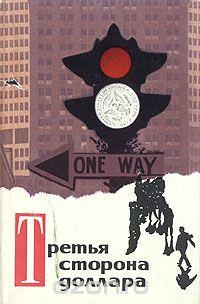
But the most famous case connected with the experience of the fate of the dog, which was reflected in Soviet propaganda, is the story about the Negro children. Allegedly, one of the American women offered to send them into space (without the possibility of returning), and not the dog. The source of this information is usually not specified.
In fact, this letter is cited in the book The Third Side of the Dollar by Albertas Laurinciukas, a staff correspondent in the United States of the Selskaya Zhizn newspaper (M., 1968, p. 27). There is a quotation from the alleged letter to the UN from one woman from Mississippi: "If the development of science needs to be sent to cosmos of living beings, in our city for this there is any arbitrariness." This is most likely a lie.
10. The resonance from Laika's flight was still so great, because in the West it frightened many.
Politicians and the media in the West sometimes went overboard, as it now seems, whipping up fear about Soviet space successes. But let's not forget that the destruction of capitalism was officially declared the goal of the USSR in many communist policy documents, and General Secretary Khrushchev promised to show America "Kuzkin's mother." The term "peaceful coexistence of the two systems" appeared only in the 1970s.
11. Some of the employees who participated in the preparation of Laika suffered psychologically the death of a dog.
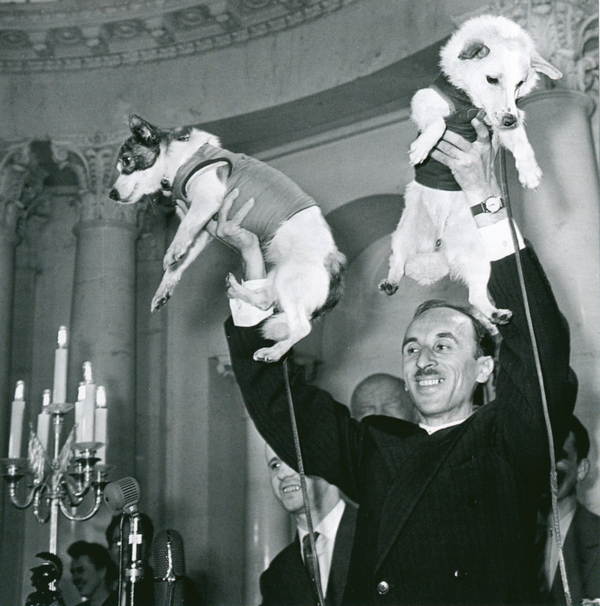
Apparently, the text of the solemn line (or its imitation) dedicated to astronauts was used as a vocal sample throughout the track. The girl in a cheerful voice lists the heroes “whose names will live forever” - it is gratifying that in the long list, after Gagarin, Titov, Leonov, Tereshkova and Savitskaya, the names of Belka, Strelka and Laika are mentioned.
Today, in the afternoon, Roskosmos posted a 7-minute film about Laika's flight - "Laika in the Universe" on its social media accounts. It briefly tells about the preparation and the first flight of a living creature into space.


